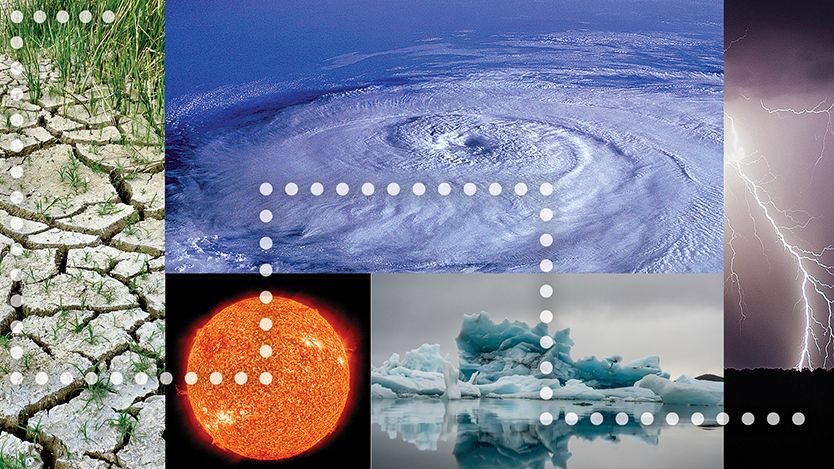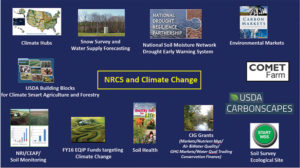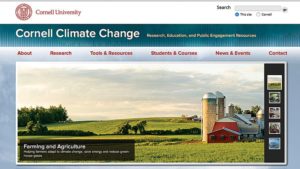How to Keep Track of Climate Change
 Among the many, many tools and resources developed, maintained, supported, or compiled by the USDA Natural Resources Conservation Service (NRCS) are a wide variety of references and planning assistance applications related to carbon sequestration and climate change.
Among the many, many tools and resources developed, maintained, supported, or compiled by the USDA Natural Resources Conservation Service (NRCS) are a wide variety of references and planning assistance applications related to carbon sequestration and climate change.
NRCS maintains a climate change portal as a home base for understanding and for planning for reducing the impacts of agricultural practices on the climate combined with building in climate resiliency to minimize the impacts of climate change in the U.S. and around the world.
Visit the NRCS Climate Change portal.
In addition to the main tools and links, the site offers responses to a number of frequently asked questions and discussion topic:
1. What is the difference between weather and climate?
2. What is climate change?
3. What is the difference between climate change and climate variability?
4. The greenhouse effect and climate change
5. NRCS conservation practices and climate change
6. Climate change impacts on agriculture and production
COMET-FARM is one of the many links on the climate change portal. It is a whole farm and ranch carbon and greenhouse gas accounting system.
Once data are entered and analyzed, reports can be generated comparing current and future farm management scenarios and their impacts on carbon storage or “sequestering.”
The USDA Carbonscapes portal, also available from the NRCS Climate Change page, provides users with many ways of viewing and modeling national and county carbon pool and climate statistics in various map and graphical formats.
In addition to NRCS and other governmental tools, most land grant colleges and many other colleges and universities have developed and compiled regionalized tools and resources for understanding and addressing climate change.
 For example, Cornell University maintains a robust set of links and web pages. Within the Tools and Resources tab of Cornell’s Climate Change page are many more links specifically for agriculture and even home gardening.
For example, Cornell University maintains a robust set of links and web pages. Within the Tools and Resources tab of Cornell’s Climate Change page are many more links specifically for agriculture and even home gardening.
A particularly well-developed set of tools and references can be found within the U.S. Climate Resilience Toolkit web page. This set of tools helps users navigate through the following steps to lower climate-related risks:
Farmers may ask, “What difference can I make on my farm alone?”
Individually, probably not that much. But, if we are all working toward the same goal, and particularly if the successes of climate change management strategies spread beyond the U.S. borders, the agricultural industry can demonstrate it is doing its part to address the climate change issues that threaten the agro-ecosystem, the natural environment, the built landscape, national and global economies, and the health of the planet.
Readers are encouraged to spend some time reviewing these web pages and tools and to contact their local NRCS, Soil and Water Conservation District, and/or Cooperative Extension offices for additional assistance. NRCS employees around the country are empowered to help producers address climate change issues using current and evolving tools and technologies.
John Whitney ([email protected]) is a District Conservationist for the USDA Natural Resources Conservation Service in East Aurora, NY.










